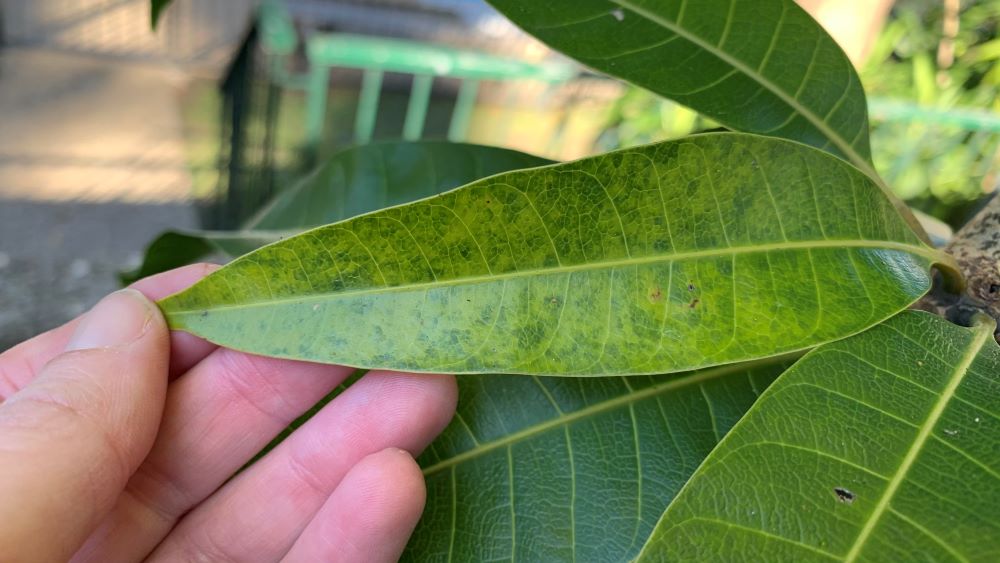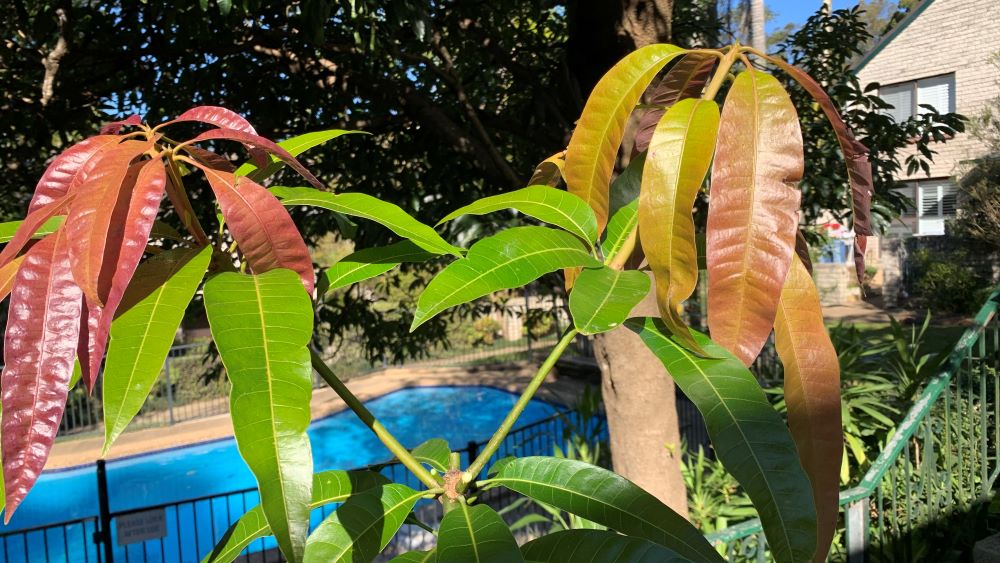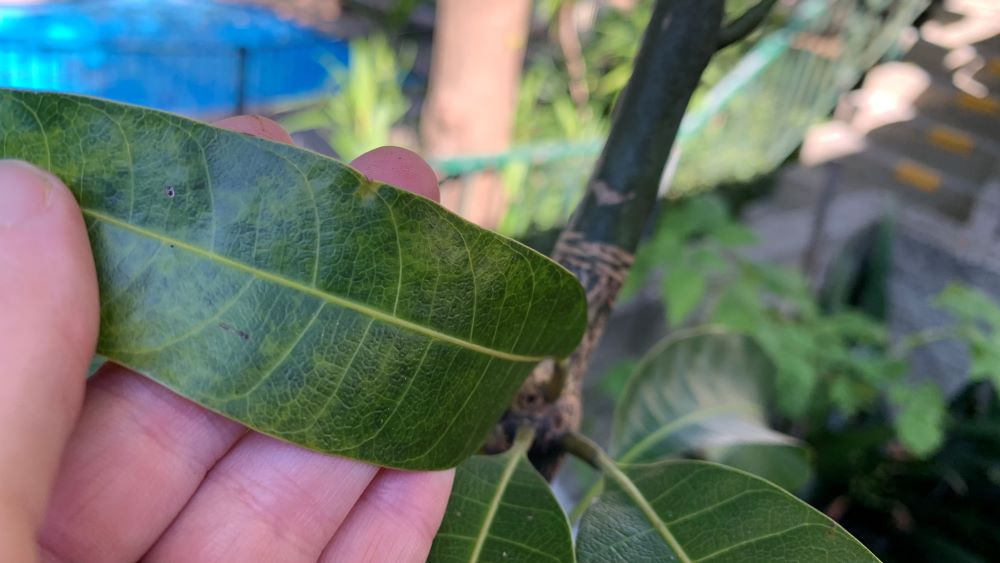Mango trees are easy to grow in tropical areas but they can develop yellow leaves if they are not getting the conditions they need. The top causes of yellow leaves on mango trees include overwatering, poor soil, pest attack, underwatering and fungal growth.
This article will explore the top causes of yellow leaves on mango trees and what you can do to solve each one. Catching the problem early can mean that you can save the leaves, keep the plant growing strong and get mangoes sooner.

Top causes of yellow leaves on mango trees
Check out the top causes of yellow leaves on mango trees so you can figure out what is going on with your tree.
1. Overwatering
Overwatering is a common cause of yellow leaves on mango trees. High rainfall or adding too much water yourself through irrigation or your garden hose can cause the leaves to turn yellow.
This year we have had almost triple the amount of rain that we normally get over summer. This has washed out valuable nitrogen from the soil. Too much water can also compact the soil, reducing the amount of oxygen available to the roots.
If the plant doesn’t get the nutrients or oxygen it needs it will suffer and develop yellowing leaves.

Excess water in the soil can also cause fungal growth on the roots known as root rot. This will damage the tips of the roots and stop the plant from absorbing the nutrients it needs to grow.
Heavy clay soils can also hold water for longer, reducing draining and causing the same problem.
Solution
To fix the problem of overwatering it is important to add mulch around the base of the plant. I like to use bark mulch because this will help to regulate the amount of water that reaches the roots.
If you are adding too much water yourself, check the soil with your finger and only water the plant when it is dry 2 inches below the surface. Deep water the plant less often rather than watering it everyday. Mango plants can grow well with watering 1-3 times per week in summer and once every 2 weeks in the cooler months if they are grown in the ground.
For potted mango trees, check the moisture in the potting soil with your finger before adding more. This will prevent overwatering and the loss of valuable nutrients from the soil.
Give the plant a handful of pelleted chicken manure to return the nitrogen and water it in with seaweed solution to help the roots to repair.
2. Poor soil
Mango trees grown in poor soil can lack the nutrients, water and air they need causing the plant to develop yellow leaves. Cheap or old potting soils can have small amounts of organic matter which will break down fast and will stop the soil from holding water. They usually will not contain slow release fertilizer which can cause the tree to suffer after 2-3 months.
Mango trees grown in ground soil that contains lots of clay can struggle to absorb the nutrients they need from the soil. The soil can get hard, compacted and the roots will not grow strong to stabilize the plant.

Solution
Improving the soil before planting mango trees in the ground is essential to ensure that the roots can spread out wide and stabilize the plant. Before planting dig through a bag of aged cow manure and the same amount of compost. I like to mount the soil slightly to improve drainage.
Choose a premium potting soil if you are planning on growing a mango in a pot. Good quality potting soils will contain loads of organic matter and a slow release fertilizer to feed the plant.
3. Pest attack
Pest attack can cause mango trees to develop yellow leaves. Sap sucking insects such as aphids, thrips or mites can attach themselves to the leaves and cause a yellowing over time.
Caterpillars, snails and slugs are chewing insects that can climb up and chew on your mango leaves. This can cause yellowing on the leaves or near where the bugs have been chewing.
Solution
Sap sucking insects are easily treated with neem oil, a natural oil extract that can be diluted and sprayed on the leaves. It will not harm the plant or any beneficial insects in your garden. Spray the underside of the leaves and make sure you coat the bugs thoroughly.
Repeat the process after a few days if there are insects still on your plant. Spray the plant in the morning or late evening to avoid the hottest part of the day otherwise the leaves may burn.
Caterpillars, slugs and snails can be easily picked off with gloved hands or flick them off with a small spade. You can spray them with a mix of detergent and water or surround your mango tree with coffee grounds. This will be enough to stop slugs and snails from reaching your tree and climbing up.
4. Underwatering
Mango trees that are underwatered can quickly develop yellow leaves that will dry brown on the tips. Mangos are tropical fruits so thrive in warm, humid conditions with regular water. While too much water can wash away nutrients, not enough water will cause the leaves to dry out and the plant can suffer.
This often affects the newest leaves first but the plant can quickly die if it is not give the water it needs.
Check the soil with your finger and if it is dry 2 inches below the surface, underwatering is likely to be the cause of the yellow leaves.

Solution
The easiest way to solve this problem is to deep water your mango tree with your hose. Completely wet the area around the root zone. Add a bucket full of water with seaweed solution mixed through to help the roots to recover quickly. Surround the root zone with 2-3 inches of bark mulch to help to keep the water in the soil for longer.
Water the plant again after 3 days if the weather is warm. Keep an eye on the plant and make sure it gets regular water, particularly over the warmer months. Mango plants are hardy and can recover if they are given the water they need.
Yellow Leaves on Mango Trees | Summary
Mango trees are fun plants to grow at home and will thrive if you live in a tropical, subtropical or even temperate climate. They need regular water, well draining soil and regular fertilizer to thrive. I like to feed my plants with pelleted chicken manure in the spring and fall to keep them growing well and avoid any nitrogen deficiencies.
Mango trees are fast growing and will reward you with mangoes once they are established.
Happy growing.
I am an accredited practicing dietitian, experienced gardener and a dedicated cook. I love writing and sharing my experience so you can learn from my successes and mistakes.
